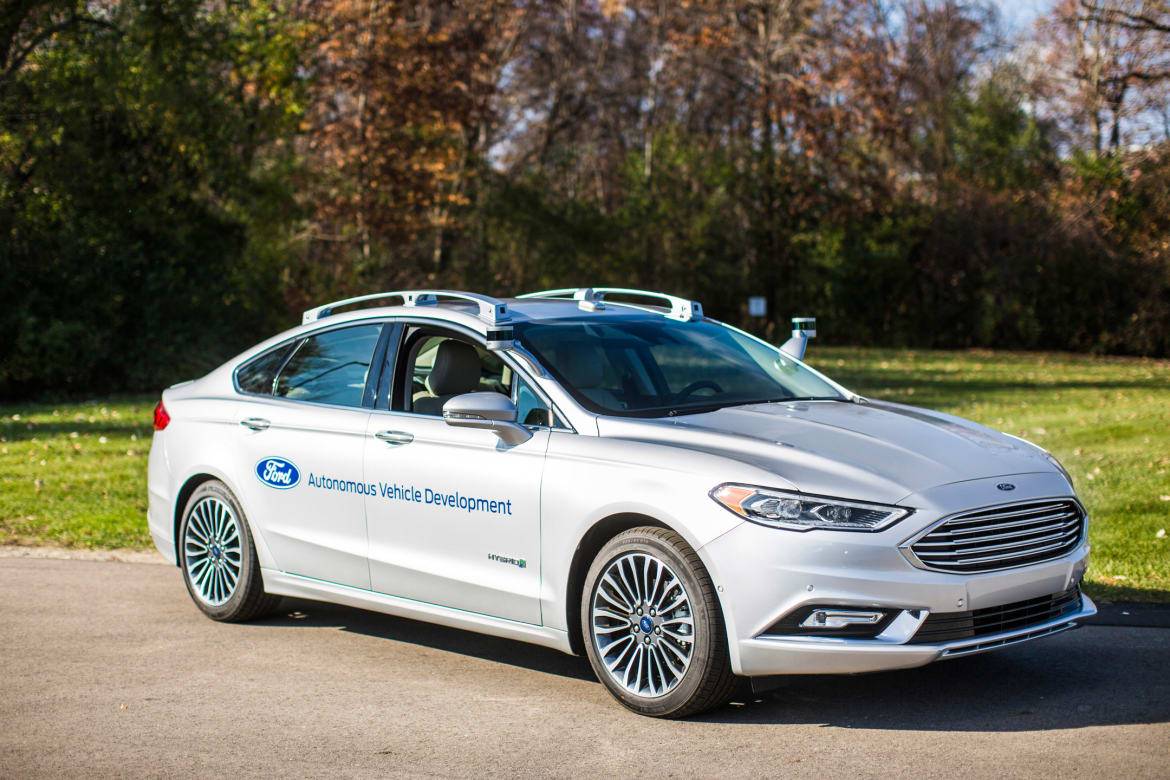Ford Debuts Sleeker Self-Driving Fusion Hybrid

CARS.COM — Ford has revealed a much sleeker and more refined version of its self-drive Fusion Hybrid sedan. The high-tech family car arrives just in time for the Consumer Electronics Show in Las Vegas, as well as the North American International Auto Show, held in Detroit.
Related: More Tech News
Previous Ford Fusion self-drive prototypes had much larger and extremely clunky-looking sensors that resembled everything from metallic antlers to police lights and massive 1980s boom boxes. They weren’t pretty, to say the least.
Why should I care? Beauty is far from being only skin-deep with the latest Ford Fusion autonomous-drive prototypes — the new cars are significantly smarter, too. Updated computer hardware increases processing power despite the fact that these Fusion prototypes now rely on fewer sensors to read and scan the road. According to Ford, this is partly due to “better placement” of the sensor array, including two (rather than the previous four) lidar sensors that “have a sleeker design and more targeted field of vision.”
Uber Updates Autopilot for 1,000 New Models
Tesla Motors has updated the Autopilot self-driving system in its newest models. The software update, as reported by Bloomberg, is meant to bring Tesla’s lineup into one unified whole in terms of self-drive capability and standard safety features.
Why should I care? A couple months ago, when Tesla announced it would begin installing self-drive hardware in all of its new models, there was one hitch that went largely unnoticed. These new vehicles had improved sensors and an upgraded Autopilot system for eventual full-autonomous driving capability, but they lacked safety features that had been included on older Tesla vehicles.
As we reported back in October, these new Tesla models lacked safety items such as forward collision warning and automatic emergency breaking, along with active cruise control and lane holding. Thankfully, this latest software update brings these features back to all of Tesla’s new models.
MIT Study Finds Carpool Apps Could Slash NYC’s Taxi Fleet
The days of the New York yellow cab might not be over, but the era of single-passenger taxi cab rides might someday be deader — and dumber — than a dodo. That’s because a study by MIT has found carpooled taxi apps have the potential to dramatically alter the automotive landscape of major urban centers. Using New York City as their test subject, the researchers found that 98 percent of all taxi rides could be handled by a fleet of only 3,000 four-passenger carpooled taxis.
That’s huge news for the Big Apple’s traffic problems, especially when you consider the city currently has roughly 14,000 taxicabs in service.
Using a highly detailed algorithm that crunched data from 3 million taxi rides, this fleet of intelligent carpool taxis could monitor real-time traffic congestion, determine the ideal vehicle to handle multiple riders (a large passenger van versus a standard sedan, for example), and even pinpoint locations where idled cabs would be most useful if quickly pressed back into service. Despite the drastic cut in taxi numbers, the study found the average wait time for a cab would be less than three minutes long.
“Instead of transporting people one at a time, drivers could transport two to four people at once, [which] results in fewer trips, in less time, to make the same amount of money,” said Daniela Rus of MIT’s Computer Science and Artificial Intelligence Laboratory. “A system like this could allow drivers to work shorter shifts, while also creating less traffic, cleaner air and shorter, less stressful commutes.”
Why should I care? Sharing your cab could change the world, or so it seems. While ride-hailing companies such as Uber and Lyft will applaud this study, the science behind it relies on the driving habits of one particularly dense urban environment. Ask any New Yorker and they’ll tell you many cabs prefer to pinball their way back and forth between tourist hot spots.
A big chunk of this study also rests upon the idea that self-drive vehicles are coming sooner rather than later. Rus said “the system is particularly suited to autonomous cars, since it can continuously reroute vehicles based on real-time requests.” So, those few remaining taxi drivers whose lives are improved with more fares and less traffic could potentially be out of a job, also much sooner rather than later.
Featured stories




